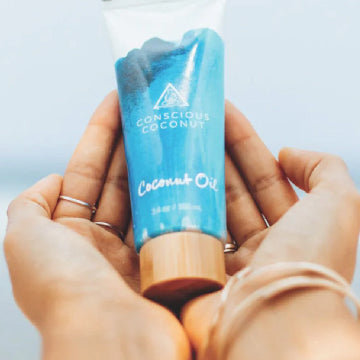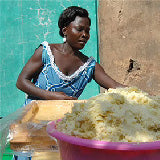The Social Mission of Beautycounter's Gregg Renfrew

If you were to type ‘What is the definition of Clean Beauty?’ into Google, you’ll be given about 62,900,000 results. Countless beauty brands from Tata Harper to Athr Beauty and media outlets like the Washington Post and Harper’s Bazaar all have their own definition for what clean beauty means. That’s because there actually is not one sacred doctrine that defines this term.
After spending 45 seconds scrolling through some of the posts, here is a small sampling of what you’ll see:
“Safe for people and the planet.”
“Celebrating the beauty of nature.”
“Being conscious of what we put in our bodies.”
“Mindful products without toxic and noncontroversial ingredients.”
I remember hearing about clean beauty for the first time around 6-7 years ago when I was in the height of my beauty PR career. I had a full roster of beauty clients and maybe one of them would have been considered “clean” at the time. I sensed things were about to get intense.
The momentum for which this new wave of responsibility took off within the beauty industry was fast and furious. Every time I went online or opened a magazine, I learned of another “clean” brand. Today in 2022 if you are launching a brand and you’re not adhering to clean beauty protocols like banning parabens, sulfates, benzophenone, talc, aluminum, fragrance, formaldehyde, which is just the tip of the iceberg, good luck!
One of the most influential women behind the clean beauty movement is the founder and Executive Chair of Beautycounter, Gregg Renfrew.
Gregg has been a pioneer in the clean beauty space over the past decade and has always strongly believed that inciting fear is not the most impactful way to create meaningful, long-term change. As a result of Gregg’s commitment to consumer education and advocacy for industry legislation, Beautycounter has supported the passage of 10 pieces of legislation for safety screening and ingredient transparency.
Since its founding in 2011, Beautycounter has been passionate about getting safer products in the hands of consumers and has taken a constructive approach to education on clean ingredients and product safety.
I recently had the good fortune to connect with Gregg about her professional crusade of cleaning up women’s beauty cabinets across the country.
Tell us about your clean beauty journey.
After watching the documentary An Inconvenient Truth in 2006, I started to connect the dots between how what was detrimental to the earth was also detrimental to human health. Around this time, I was also watching my family and close friends struggle with health issues. I had never considered that the products I used on myself and my family might not be safe. I was inspired to make sweeping changes in my life, from swapping plastic for glass, buying organic mattresses to using safer household cleaning alternatives, like vinegar, to clean my floors. But when it came to personal care products, I couldn’t find products that were both high-performing and safer for human and environmental health. I saw a whitespace in the marketplace to create products that are high-performing, made with significantly safer ingredients, and packaged in environmentally friendly materials. After discovering the US had not passed a major federal law governing the cosmetics industry since 1938, I also realized the need to change the industry to make safer products available to everyone, and advocate for cosmetic reform to update outdated legislation. This is how Beautycounter was born.

When I founded Beautycounter, consumer awareness on ingredient safety was quite low not only around the beauty industry, but all personal care and household products. Candidly, it was in the industry’s best interest for consumers to be left in the dark. Much of the beauty industry has been built on secrets, and change is hard. Getting to clean is even harder. When we launched in 2013, the clean beauty movement was almost non-existent, but we’ve led the conversation to bring the beauty industry’s secrets to the forefront, working tirelessly to advocate for more health-protective legislation, educate consumers so that they can make informed choices and take a participatory approach, and formulate products that are safer for human and environmental health.
What’s been your biggest accomplishment over the last 10 years?
Over the last 10 years, Beautycounter ignited the clean beauty movement and has proven that commerce can be a powerful engine for change.
Since we launched nearly a decade ago, Beautycounter has advocated for more health-protective legislation, including allowing the FDA to regulate the industry more effectively. Beautycounter and our community have sent over 236,000 emails, made 16,000 calls, and held 2,200 meetings with legislators in the U.S. and Canada, urging lawmakers to support cosmetic reform. Our efforts have resulted in the passage of 10 pieces of legislation with 9 more in the works. In December 2019, I was the first clean beauty founder to testify on Capitol Hill on a House cosmetic reform bill, which led to the first vote on a stand alone piece of cosmetic legislation in over 80 years.
Most recently, Beautycounter has been working alongside federal lawmakers to advance and advocate for key changes to The Food and Drug Administration Safety and Landmark Advancements Act (FDASLA), which would modernize cosmetic regulation and oversight. While FDASLA presents an important step forward, Beautycounter has proposed several key changes to the bill - I outlined them in detail here.
When did you first start to see that you were making progress in changing consumer’s minds about the products they’re using?
Since we started the clean beauty movement over a decade ago, we’ve been working hard to educate consumers on ingredient safety so they can make informed choices for themselves and their families. Over the past few years, we’ve seen an increase in consumer demand for safer and more environmentally-friendly products, with consumers asking more of brands than ever before. Clean beauty is on the rise and is estimated to be valued at $22 billion by 2024; clean beauty is not a trend, it’s here to stay.

What’s been the most challenging part of growing Beautycounter?
One of the most challenging parts of growing Beautycounter was building a brand that refused to compromise the safety of its products, not only in the ingredients we use but also in the sustainability of our supply chain, our packaging materials and the ethics of our sourcing. This was non-negotiable for us when building Beautycounter, but does add an extra layer of care and investment. It’s like baking a delicious cake without using any of the traditional ingredients like butter or sugar.
Advocacy can be a long, tedious process. It isn’t easy work to affect change at the government level, but Beautycounter has proven that when you are dedicated to a cause, it’s possible to impact real change and move the needle in the right direction.
The conversation about clean beauty and science-backed beauty seems to go round and round. Do you believe the best products are a mix of both systems?
At Beautycounter, we are a clean beauty brand that takes a science-based approach. Those two things can and should go hand-in-hand. We believe that using the best available science is important in reducing exposure to harmful ingredients. This is why we are proud to collaborate with our Science Advisory Council, a group of leaders in public health policy, research and medicine. This third party council ensures we stay on the cutting edge of science and keep reaching new standards of safety.

What are some examples of how Beautycounter implements the principles of fair trade into its practices?
Our Blueprint for Clean is a comprehensive framework that articulates how Beautycounter defines clean. It entails 12 rigorous safety standards that demonstrate our unparalleled safety screening, supply chain transparency, responsible sourcing, sustainable packaging, and more. Not only are we committed to creating high-performing products with safer ingredients for our customers, but we are also committed to protecting the people who help bring our products to the market. The way ingredients are sourced can have a major impact on humanity and the environment. That is why, as part of our Blueprint for Clean, we have built an industry-leading responsible sourcing program to continually address high-risk ingredients including mica, palm oil and vanilla.
We’ve educated over 65 million people on the lack of transparency in the mica industry with our in-depth documentary and our Responsibly Sourced Mica Toolkit, which shares best practices for sourcing the ingredient, and are the first beauty brand to complete physical audits of all of our mica suppliers. Vanilla can be an extremely labor intensive ingredient to harvest, and the industry is known for human rights violations. That’s why we work with a women-owned supplier to source not only the highest quality of vanilla, but also to improve the quality of life for their community of farmers. Palm oil’s harvest can be damaging to the environment, and its supply chain can be less than transparent. We conducted a completed audit last year to become supply chain-certified through the Round Table on Sustainable Palm Oil (RSPO) and transitioned over 100 formulas to include responsibly sourced palm.
Where do you see the industry headed next?
The future of the beauty industry is clean. I am thrilled that the clean beauty movement continues to gain momentum and that consumers are becoming educated in ingredient safety and demanding more from brands. As a next step, I see the definition of clean continuing to gain more specific meaning within the industry with the help of our advocacy work to get more legislation passed to make this happen. The need for more transparency from brands and on packaging will also continue to be a key selling point for consumers.
How do you maintain a clean and sustainable regime for yourself and your family?
This is something that we practice everyday. This includes taking our shoes off at the door, using safer cleaning products around the house, buying organic food when possible, and avoiding products with fragrance to name a few. If you’re just starting to dip your toe into the world of clean, start small. Once you finish your moisturizer, swap it for a cleaner and safer alternative - and go from there.














